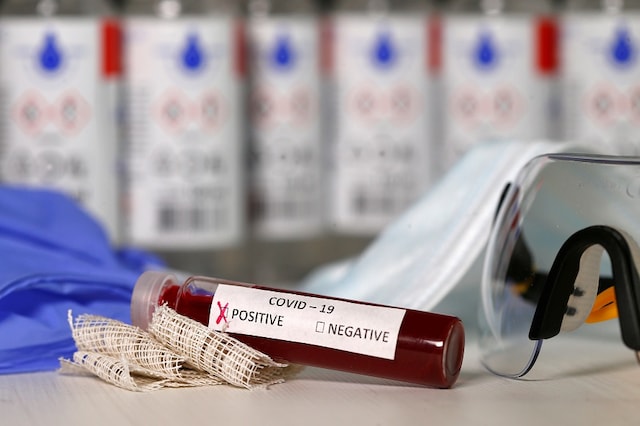As Attention Turns to Plasma Banks to Fight Covid-19, Here's What They Are & How They Function
Curated By: Nikhil Ghanekar
Last Updated:
A plasma bank is a place that stores convalescent plasma of a recovered Covid-19 patient. Convalescent plasma has been used as one of the treatments against Covid-19.

Arvind Kejriwal-led Delhi government unveiled the country's first plasma bank at the Institute of Liver and Biliary Sciences on Thursday, July 2. The chief objective of this initiative was to streamline access to blood plasma that is being used as one of the treatments for Covid-19. News18 explains what is a plasma bank and how it will function.
What is plasma?
Plasma is a light yellowish liquid part of the blood that helps carry it throughout the body. "Plasma is blood minus the cellular components – white blood cells, red blood cells and platelets. Without these components, what remains is plasma and proteins, the liquid component," explains Dr Asha Kishore, Director, Sree Chitra Tirunal Institute for Medical Sciences and Technology, Trivandrum.
What is a plasma bank and how is it useful against Covid-19?
A plasma bank is a place that stores convalescent plasma of a recovered Covid-19 patient. Convalescent plasma has been used as one of the treatments against Covid-19. A recovered person’s body contains neutralising antibodies and the plasma collected from such persons is then transfused into the body of an admitted patient.
In Delhi, public and private hospitals began plasma therapy treatments on compassionate grounds and it has showed limited improvements in patients and in some cases, it prevented their health from worsening. Delhi health minister Sateyndar Jain, who head earlier tested positive for Covid-19, received plasma therapy after which his condition improved subsequently.
According to the study in The Journal of Clinical Investigation, convalescent plasma has been used successfully in the past as post-exposure prophylaxis treatment during the SARS-1 and MERS (Middle East Respiratory Syndrome) outbreaks.
As the demand for plasma increased, patients’ kin suffered as they had to run from pillar to post to look for recovered Covid-19 patients who were willing to donate plasma. To streamline and ease access to plasma, the Delhi government launched a plasma bank at the Institute of Liver and Biliary Sciences.
Who can donate plasma?
A person who had tested positive for Covid-19 and then fully recovered with no symptoms for the next 14 days, and is in the age bracket of 18-60 years, primarily qualifies for donation. However, that is not all. There are also certain riders. A woman who has been pregnant, people who weight below 50 kg, those with comorbidities such as hypertension or diabetes, cancer survivors and persons with chronic kidney/lung/heart or liver disease cannot donate plasma.
Those eligible can donate 400-600 ml of plasma and come back for donation within a month’s time.
What are the tests carried out before one donates plasma?
Since the presence of antibodies and absence of certain health complications are key to be eligible for donation, the plasma bank carries out tests on a potential donor. First, an antibody test is carried out to check if the requisite antibodies are present in the potential donor’s body. Not all antibodies are useful for Covid-19 treatment since the body produces some to fight other minor infections as well. It has to be tested whether relevant neutralising antibodies, useful against Covid-19, are present in the plasma. A potential donor is also tested for HIV, Malaria and Hepatitis.
How can a patient’s family access plasma? Who authorises its use?
As per the clinical management guidelines of the Union Health Ministry, only off label use of convalescent plasma is allowed as of now. This means that it is not a mode of treatment that has been approved and recommended as part of the various treatments. "Convalescent plasma may be considered in patients with moderate disease who are not improving (oxygen requirement is progressively increasing) despite use of steroids," read the clinical management guidelines.
For plasma, the doctors treating patients and the medical director or medical superintendent need to authorise its use. "Based on the authorisation, the plasma is provided for the patients. However, the family of the concerned patient has to find another plasma donor of any blood group, to replenish the stock in the plasma bank," said Dr Shantanu Dubey, Assistant Head of Operations at The Institute of Liver and Biliary Sciences.
Location: New Delhi
IPL 2024: Royal Challengers Bengaluru Post 35-run Win Over Sunrisers Hyderabad on the Road | IN PICTURES
DC vs GT, IPL 2024 in Photos: Rishabh Pant's Unbeaten Knock Puts DC Over The Top as GT Lose Last-Ball Thriller By 3 Runs
CSK vs LSG, IPL 2024 in Photos: Marcus Stoinis' Herculean Century Leads LSG to Sensational 6-Wicket Victory Over CSK
Ankita Lokhande, Karan Singh Grover Up The Glam Quotient At Arti Singh's Sangeet Ceremony | Photos
What A New US Military Aid Could Mean For Ukraine's War Against Russia | In GFX
More Latest News
Karnataka Election 2024 LIVE: Actors Yash, Darshan Cast Votes; Rahul Gandhi Promises Farm Loan Waiver
Election 2024 LIVE: Till 1 PM, Tripura Witnesses Highest Voter Turnout, Maharashtra Records Lowest
SRH vs RCB, IPL 2024 Highlights: Bengaluru Register 35-run Win Over Hyderabad
Kerala Lok Sabha Election LIVE: 40.21% Voter Turnout So Far, ISRO Chief, Actor Mammootty Cast Vote
DC vs GT, IPL 2024 Highlights: Rishabh Pant's Fiery Last-Over Onslaught Makes The Difference as DC Clinch Thrilling 3-Run Win Over GT